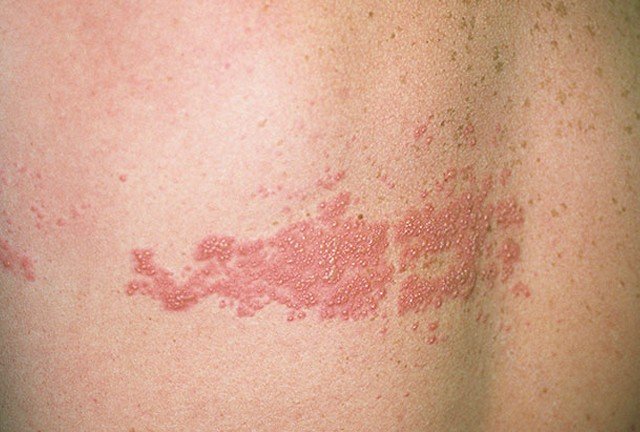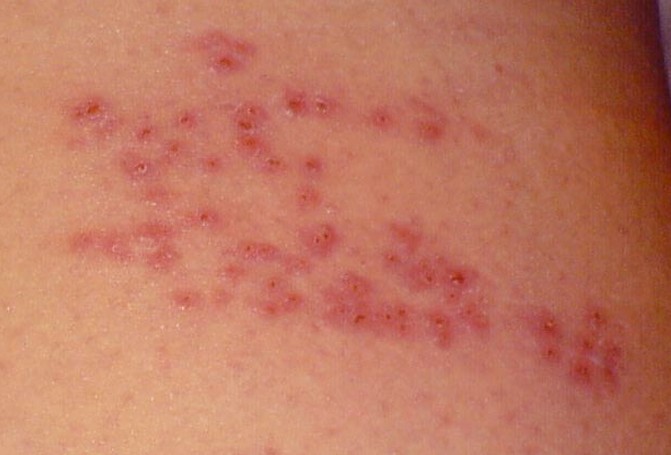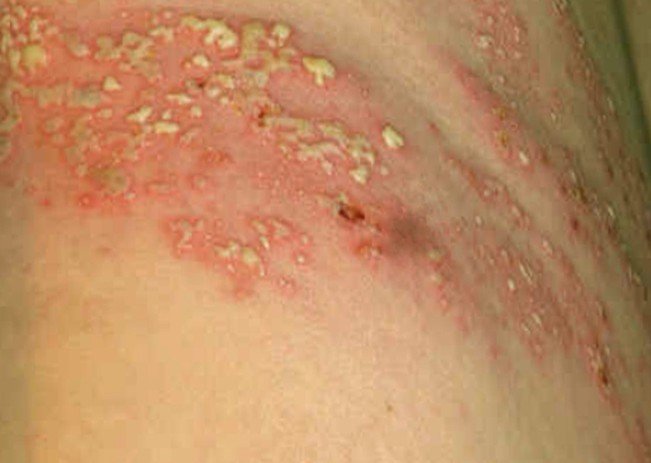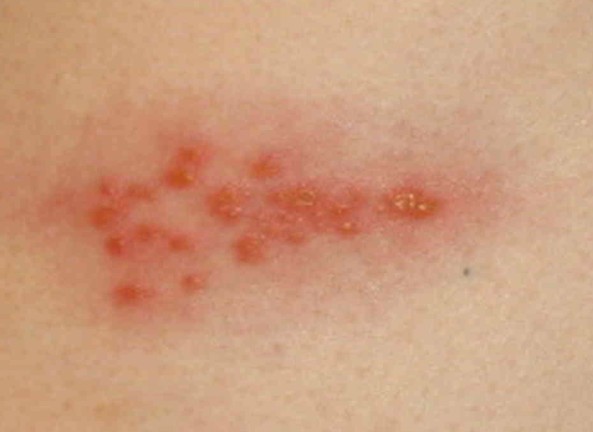Shingles Rash
Last reviewed by Dr. Raj MD on January 12th, 2022.
What is a Shingles Rash?
This is an inflammation of your skin and is the same virus that causes chickenpox which is the herpes zoster virus. If you have had chickenpox you will never be totally free of the virus. It remains in your nerve cells in a dormant condition and at any time it can become active. This can happen at any time in a person’s life but most cases of the shingles rash is found to happen in adults age sixty years or old. If you have or had cancer, low immunity, or HIV, you are more susceptible to this rash becoming active.
Because the symptoms are so vague it is often hard to diagnosis the shingles rash and can be confused with other types of rashes. For healthy people it is not a dangerous disease but if you have a compromised immune system it can cause life threatening complications.
Symptoms of Shingles Rash
What type of symptoms that you will have with the shingle rash depends on the type of nerve that has been affected by the herpes zoster virus. Even though the shingles rash is caused by the chickenpox virus the symptoms are different from the chickenpox rash. The chickenpox virus affects almost every body part while the shingles rash affects a specific area of your skin. It could be found on the face, chest, and back, or as a band on one side of your body. Before the rash appears you could experience discomfort and sensitivity on a specific area.
Later symptoms can include:
- Tingling
- Burning
- Itching
- Severe pain even if you just lightly touch it.
Symptoms that appear a few days later can include:
- A blistering rash appears and progresses to the formation of blisters that are fluid-filled and appear in clusters
- Chills
- Headaches
- Abdominal pain
- Increased fatigue
- Fever, but this is a rare symptom
Afterwards you will see the blisters pop and the fluid will start to ooze out, eventually drying out and forming a crust. There are times that there might be severe pain and bleeding in the areas that are affected. Normally it will take thirty days for the blisters to heal up. They can leave the area on your skin with scars and skin discoloration.
Causes of Shingles Rash
When a person gets the shingle rash it is because the virus has become active again. When this happens the severity and reactivation is not predictable. Even if you have not had chickenpox you could still become infected but not with the rash if you come in contact with someone who has the shingles rash because it is considered a contagious rash. You will instead get the chicken pox.
Treatment
The treatment for shingles rash is mainly planned to help shorten how long the rash will last. The treatment will also help to speed up the healing process, relieve the pain that is associated with shingles rash and help reduce the risk of developing complications such as postherpetic neuralgia (PHN) which is the pain of shingles rash can remain for months, even years after the rash has gone, which is treated with medication. Another complication a person could develop is Hutchinson’s sign which can happen when the blisters of shingles rash appear in the tip of your nose and could result in the swelling of your eye. This could cause a temporary loss of vision.
Some of the treatments that can be used include:
- Oral antiviral medication – this is the most common treatment that will help to prevent the virus from causing further infection. For people who have a compromised immune system this is what is usually prescribed. In addition to taking these orally they can be given intravenously.
- Anti-inflammatory medication – this can include medications like corticosteroids to help reduce the inflammation the rash can cause. Corticosteroids are also used to treat the shingle rash if it affects your face or eyes. In older adults that develop the shingles rash corticosteroids are usually not used as treatment because of the dangers that are associated with the serious side effects such as vision problems, mood changes, and the ability of this medication to compromise the immune system further.
- Pain relievers – depending on the severity of the stinging pain these can be either over-the-counter or prescription medications.
- Cold compresses – to help with the irritation and swelling associated with the shingles rash you can apply these to the affected areas several times a day or as needed.
- Anti-itching medication – this can include calamine lotion or an anti-itching cream, either over-the-counter or prescription, give you relief from the itchiness.
- Anti-bacterial medication – this will help prevent and treat any bacterial infections. Before you apply this medication make sure that you wash your hands thoroughly before and after you apply it. You also want to make sure that you trim your nails to help prevent any bacteria from getting caught under your nails resulting in the bacteria getting into the area.
What treatment is exactly used will depend on your health, the distribution of the rash, and your medical history. If you feel you are suffering from shingles rash you should see your physician as soon as possible so treatment can be started. One thing to remember is that the most important part of treating the shingles rash is to keep the area affected from becoming infected. If you are scratching you could get bacteria in an open sore as the result of scratching. If bacteria gets into the area it can cause more pain and further inflammation. Make sure that you keep the area clean by washing it with warm water and soap. There is also now a shingles vaccine you can get to help prevent the shingles vaccine from developing. If you do get the shingles rash after having the vaccine it duration and severity will be shorter.



